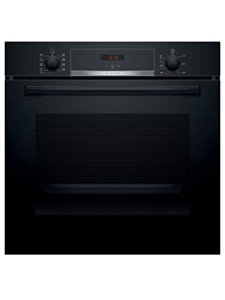You'll Never Be Able To Figure Out This Built In Electric Oven's Benef…
페이지 정보

본문
The Comprehensive Guide to Built-in Electric Ovens and Hobs
In today's hectic world, modern-day kitchen appliances have developed dramatically to cater to the tastes and requirements of contemporary property owners. Amongst these appliances, built-in electric ovens and Built in electric Oven hobs stick out for their performance, design, and performance. This short article checks out the functions, advantages, installation suggestions, and maintenance of built-in electric ovens and hobs, together with dealing with regularly asked questions.

Understanding Built-in Electric Ovens
What Is a Built-in Electric Oven?
A built-in electric oven is an appliance designed to be set up into a wall or kitchen cabinets, providing a smooth, integrated oven appearance in the kitchen. Unlike freestanding ovens, built-in designs conserve space and typically come geared up with additional features such as self-cleaning cycles, convection cooking, and numerous cooking modes.
Kinds Of Built-in Electric Ovens
- Single Ovens: Ideal for smaller sized kitchen areas or those who cook for less people.
- Double Ovens: Offer more cooking space, appropriate for larger families or those who entertain regularly.
- Combination Ovens: These include both a traditional oven and a microwave, supplying versatile cooking choices.
Advantages of Built-in Electric Ovens
| Benefit | Description |
|---|---|
| Space-Saving Design | Fits perfectly into cabinets, freeing up counter space. |
| Improved Aesthetics | Creates a contemporary, expert kitchen appearance. |
| Versatile Cooking Options | Often includes numerous cooking modes including bake, broil, and convection. |
| Energy Efficient | Takes in less energy than conventional ovens. |
Comprehending Built-in Hobs
What Is a Built-in Hob?
A built-in hob is a cooking surface area installed into the kitchen countertop, integrating perfectly with the kitchen style. Available in electric, induction, and gas varieties, electric hobs are renowned for their precision and ease of usage.
Types of Built-in Hobs
- Electric Hobs: Traditional coil aspects that heat through electrical resistance.
- Induction Hobs: Use magnetic energy to heat only the pots and pans, making them quicker and more secure.
- Ceramic Hobs: Feature a smooth surface with glowing heat beneath, offering easy cleansing.
Advantages of Built-in Hobs
| Advantage | Description |
|---|---|
| Quick Cooking Times | Electric hobs heat rapidly, decreasing overall cooking time. |
| Easy to Clean | Flat surface area allows for fast and uncomplicated cleansing. |
| Durable | Generally built to last and withstand high temperatures. |
| Versatile Compatibility | Functions well with different cookware products. |
Installation Considerations
Setting up a built-in electric oven and hob requires mindful preparation.
Steps for Installation
- Measure the Space: Ensure the dimensions of the oven integrated and hob match the designated space in your kitchen.
- Examine Electrical Requirements: Consult an electrician to ensure electrical wiring can manage the home appliance's power needs.
- Placement of Appliances: Position the oven at a hassle-free height, typically in between waist and eye level.
- Ventilation: Ensure proper ventilation, specifically if your oven includes a range hood.
Necessary Tools
- Power drill
- Screwdrivers
- Level
- Determining tape
Security Precautions
- Constantly detach the power before installation.
- Follow producer instructions thoroughly.
- Think about employing a professional for electrical connections.
Upkeep Tips
Keeping built-in electric ovens and hobs is important for durability and efficiency.
Routine Care Routine
- Cleaning the Surface: Use a soft fabric and manufacturer-recommended cleaner.
- Inspecting Electrical Connections: Check cables and plug for damages periodically.
- Cleaning up Filters: If the oven has a ventilator, clean or replace the filters as needed.
Repairing Common Issues
| Problem | Possible Solution |
|---|---|
| Oven Won't Heat | Examine the power supply and heating aspect. |
| Heating Inconsistency | Check the thermostat and oven calibration. |
| Hob Not Heating | Guarantee pots and pans is compatible and check the power supply. |
Regularly Asked Questions
1. How do I select the best size built-in electric oven?
Choosing the ideal size includes determining your kitchen area and thinking about just how much cooking you usually do. If you captivate regularly or have a large household, select a double oven.
2. Are built-in electric hobs safe to utilize?
Yes, built in ovens for sale-in electric hobs are safe, especially induction hobs which just heat the pots and pans, lowering the danger of burns.
3. Can I set up a built-in oven and hob myself?
While it is possible for skilled DIY lovers, working with a professional is recommended, particularly for the electrical connections.
4. How typically should I clean my built-in oven and hob?
Cleaning up must be done routinely after use, with deep cleaning periods depending on cooking frequency - usually every few months.
5. Do built-in appliances need special upkeep?
Built-in appliances need similar upkeep to freestanding models, however proper care must be taken with their surrounding cabinets.
Built-in electric ovens and hobs present a combination of technology and design, using efficiency and contemporary aesthetic appeals to any kitchen. With correct selection, careful installation, and regular maintenance, these appliances can boost one's cooking experience for several years. Comprehending the functions, benefits, and care requirements can empower property owners to create the kitchen of their dreams-- effectively and stylishly.
As kitchen areas continue to evolve into main hubs of the home, choosing the right Built In Electric Oven-in solutions plays an important role in day-to-day cooking creativity and satisfaction.
- 이전글5 Killer Quora Answers On Builtin Oven 25.05.20
- 다음글15 Of The Most Popular Intergrated Electric Oven Bloggers You Must Follow 25.05.20
댓글목록
등록된 댓글이 없습니다.



